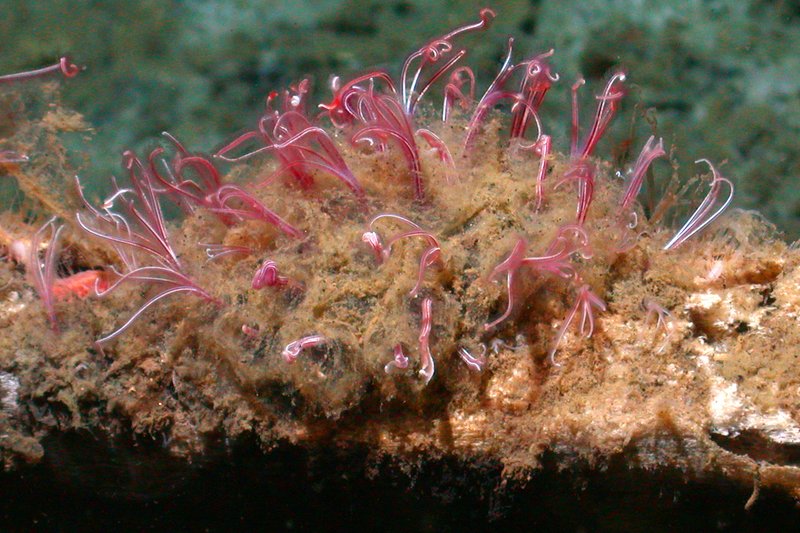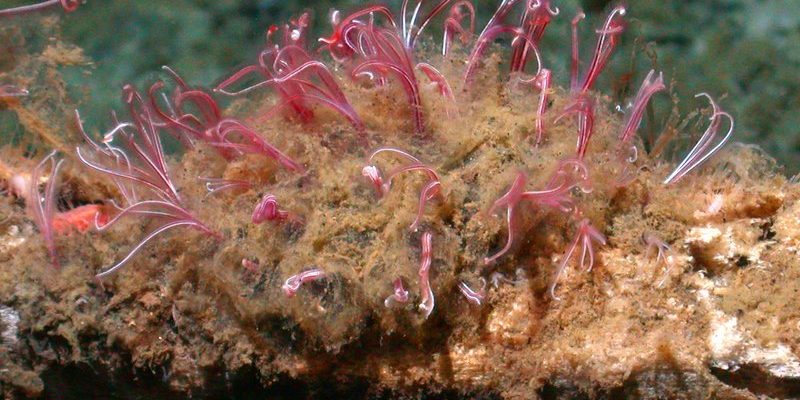
These intriguing worms have a knack for making their home in an environment that would challenge most other life forms. Instead of living in lush greenery or colorful coral reefs, they prefer the bleak, harsh landscape of the ocean floor, particularly around whale falls and other marine carcasses. So, you might be wondering how these worms manage to thrive where few others can. Let’s unravel the secrets of their habitat preferences and what makes them tick.
What Are Bone-Eating Worms?
Before we dive into their habitats, it’s essential to understand what bone-eating worms are. *Osedax* are specialized marine worms that feed primarily on the bones of dead animals, particularly whales. They possess unique adaptations, such as a symbiotic relationship with bacteria, which helps them break down fats and nutrients stored in the bones. This process not only sustains them but also plays a crucial role in nutrient cycling in the ocean.
These worms come in various sizes, with some species reaching lengths of up to a meter! They have a soft, fleshy body and are often covered in a bright hue, making them visually striking against the gray backdrop of the ocean floor. But despite their odd eating habits and appearance, they’re vital to the ecosystem, breaking down complex organic materials that would otherwise go to waste.
Deep-Sea Habitats: The Underwater Landscape
The bone-eating worm primarily inhabits deep-sea environments, where light fails to penetrate and temperatures are chillingly cold. These habitats often include the abyssal plains and the sea floor around hydrothermal vents. Here’s where it gets interesting—most marine life here struggles due to the lack of nutrients, but *Osedax* finds a treasure trove in the carcasses that drift down from the surface.
The harsh conditions of the deep sea are characterized by high pressure, extreme temperatures, and low light levels. Yet, *Osedax* has adapted perfectly to these conditions. Their habitat preferences are directly tied to the availability of dead marine animals. Think of it as living in a remote part of a city where the only source of food is leftovers from a restaurant—you have to be skilled at making the most of what you find!
Feeding Grounds: Whale Falls
One of the primary habitats for bone-eating worms is known as whale falls. When a whale dies, its massive body sinks to the ocean floor, creating a buffet for various marine organisms. Here, *Osedax* worms feast on the whale bones, breaking them down and using the bacteria in their bodies to extract nutrients.
This process can take years, and during this time, the whale fall becomes a hotspot for marine life. Other scavengers, such as sharks and deep-sea fish, often visit the area, making it a rich, bustling ecosystem. It’s like hosting a huge feast, where different guests (various marine creatures) come to partake, while *Osedax* worms quietly do their essential work of recycling nutrients.
Associated Ecosystems: The Importance of Biodiversity
The habitats of bone-eating worms do more than just support their survival; they’re also crucial to the ocean’s biodiversity. By breaking down whale bones, *Osedax* contributes to nutrient cycling, which benefits other organisms in their environment. This process helps sustain a variety of life forms, from tiny microbes to larger scavengers, creating a well-balanced ecosystem.
When a whale falls occurs, it acts as an oasis in the nutrient-poor depths of the ocean. Various organisms, including crustaceans, fish, and more, rely on these habitats for food. It’s a reminder of how interconnected all forms of life are, even in the most unexpected places. So, the next time you hear about a whale carcass on the ocean floor, remember that it’s not just a sad end—it’s a new beginning for many species, including our quirky bone-eating friend.
Physical Conditions: Temperature and Pressure
The bone-eating worm’s habitat is characterized by specific physical conditions that, surprisingly, they thrive in. The average temperature in deep-sea environments can range between 0 to 4 degrees Celsius (32 to 39 degrees Fahrenheit). This cold water is a stark contrast to the shallow waters where many marine creatures live.
Pressure is another factor to consider. Deep-sea habitats can experience pressures over 4000 psi, significantly higher than what we feel at sea level! Most marine life doesn’t stand a chance in these conditions, but *Osedax* has adapted to survive. Think about it like living in a high-rise building without worrying about the elevator breaking down—you just get used to a different way of life.
Importance of Bone-Eating Worms in the Ecosystem
You might wonder what would happen if bone-eating worms didn’t exist. Without them, the decomposition of large marine mammals would slow down significantly. Nutrients trapped in the bones would take much longer to return to the ecosystem, negatively impacting the food web.
In essence, these worms are like the cleanup crew of the ocean—essential for maintaining a healthy underwater ecosystem. By recycling nutrients, they ensure that life can continue to thrive in the depths. It’s a thankless job, but without them, our oceans would miss out on a vital link in the food chain.
Conservation and Future Challenges
As we learn more about the fascinating world of bone-eating worms, it’s also essential to consider their future. Deep-sea ecosystems face various challenges, from pollution to climate change. As humans continue to impact the oceans, habitats that support *Osedax* and other marine life may be threatened.
Conservation efforts are crucial to protect these unique environments. By raising awareness about the importance of deep-sea ecosystems and the organisms that inhabit them, we can help ensure that creatures like the bone-eating worm continue to thrive. It’s a shared responsibility to care for our oceans, and every effort counts.
In summary, the habitat preferences of the bone-eating worm reveal much about the resilience of life in extreme conditions. These worms not only teach us about adaptation and survival but also remind us of the interconnectedness of marine ecosystems. Without them, our understanding of the ocean’s mysteries would be incomplete, and its health could be jeopardized. So, the next time you gaze out at the ocean, remember the unseen wonders lying beneath the surface.

